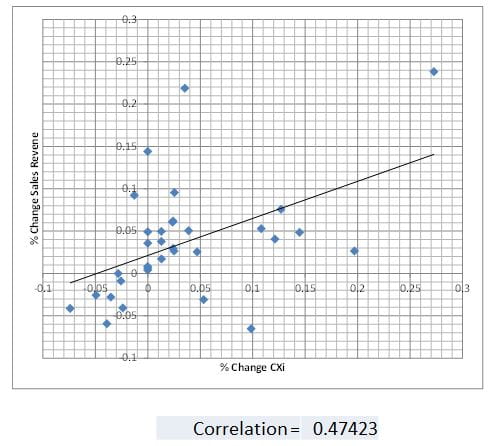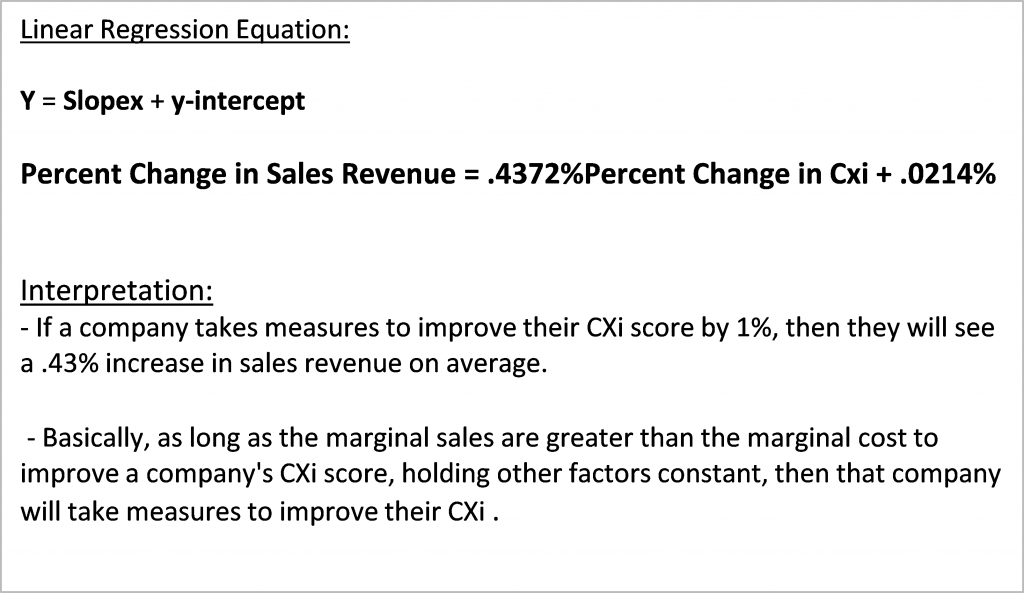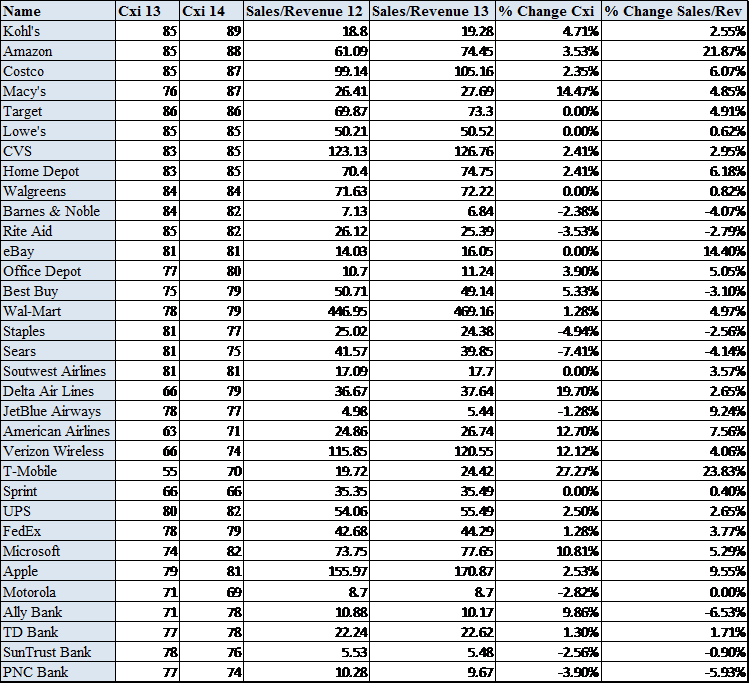
Archive | InBrief
Improve your customer experience and grow revenue
Improve your customer experience and grow revenue
Most would agree that providing an excellent customer experience is a good thing. Since it’s summertime, it may even rank up there with baseball, hot dogs and apple pie—but many have struggled to quantify the financial benefits of customer experience. The ROI of an outstanding customer experience oftentimes seems highly qualitative, soft and squishy.
We in the Customer Experience practice wanted to empirically test the relationship between improvements in customer experience and revenue growth. To do so we leveraged Forrester’s annual Customer Experience Index (CXi) as a proxy for customer experience prowess and looked at year over year revenue growth for a random selection of public companies. The Forrester CXi score annually benchmarks how well 175 firms in 14 industries are rated for their customers perceptions of their interactions with the company. Many companies were fortunate to see an increase in their CXi score over the span of the past year, which begs the question: could an improvement in customer experience have an effect on a company’s top line financial performance?
The graphic below (Figure 1) includes a linear regression model and a correlation between the change in Forrester’s Customer Experience Index (CXi) scores from 2013 to 2014 and top-line revenue growth from FY 2012 to 2013. For the study we used a random selection of public companies and obtained their financial data from their 10-K reports and other financial resources. The CXi report is published in January and thus measures the customer experience capabilities as of the previous year. As such the 2014 CXi measures capabilities for 2013, while December 31, 2013 fiscal year end financial results measures the revenue contribution for 2013 - so the two measurement periods sync. (The data set used for analysis is shown at the end of this blog in Figure 2.) These two measures allowed us to take a closer look at the effect of a positive customer experience on subsequent revenue growth via statistical techniques called linear regression and correlation.
Figure 1 - Linear Regression: % Change in Sales Revenue to % Change in CXi
As you can see by the linear regression, there is a fairly strong and constant upward sloping linear relationship between improvements in customer experience and an increase in top line revenue. Also, the correlation coefficient is 0.47 which for the amount of companies included in the study is statistically significant. (Note: correlation coefficients vary from -1 to +1, where +1 would be perfectly positively correlated – such as a data set to itself) a correlation coefficient of 0.47 means that roughly half or 50% of the revenue growth experienced by these selected firms could be explained by improvements in customer experience.
Thus, it can be empirically proven that an improvement in customer experience is statistically correlated to better revenue growth.
Figure 2: Data Set used for Analysis
Source: 2014 Forrester Customer Experience Index, Company 10-Ks
The members of the Customer Experience Practice at West Monroe are continuously helping clients provide effortless, multi-channel experiences. For more information on how your firm can leverage customer experience to drive measurable financial results please contact us.



